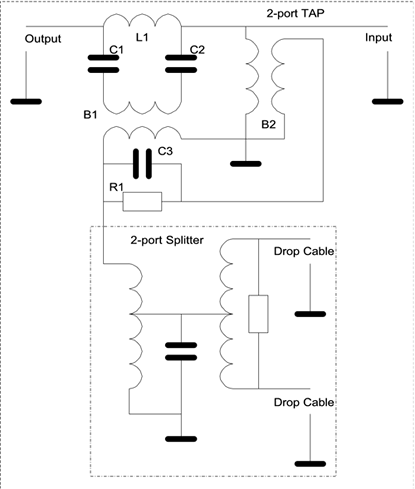3.4 Tap
| Taps are used to connect drop cables to a distribution cable. A tap introduces a much higher signal loss to drop cables than is seen in its transmission path along the distribution cable. A two-port tap consists of a line coupling part and a two-port splitter as shown in Figure 3.7. In general, an n-port tap consists of a coupling part and an n-port splitter. Impedances of the distribution cable and the input port of the splitter are all 75 ohms. The coupling circuit matches impedances of distribution cables at both input and output ports and of the splitter while introducing a small loss in the distribution cable, and coupling the signal to the splitter. Signal coupling is done through a combination of parallel and serial energy tapping. The transformer B1 is in series with the distribution cable, while the transformer B2 is in parallel. The ABCD parameters of the coupling circuit can be derived in the interest of studying the transmission performance of the cable TV distribution plant. However, for the purpose of home networking using in-house coaxial cable, we just simply assume that the drop cable is properly terminated with an impedance of 75 ohms by examining the internal structure of a tap. Figure 3.7. Structure of a Two-Port Tap
|
EAN: 2147483647
Pages: 97
